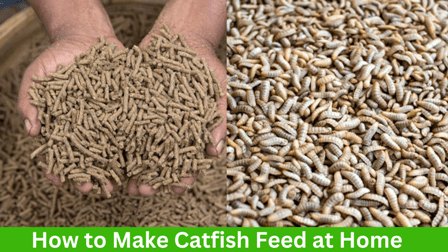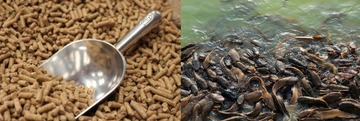General Tips
10 Catfish Farming Facts You Probably Did Not Know

Catfish farming is an important industry that provides high-quality protein to consumers around the world. It has also gained popularity, especially in Africa where many have ventured into the business as their main source of livelihood.
The industry has grown in recent years and is now a significant source of income for many farmers in Africa.
That notwithstanding, there are many challenges in catfish farming one must have to know. However, with proper training and the right information scaling the huddles is easy.
In this today's post, we will look at some of these catfish farming facts to help you understand this aspect of farming better.
Catfish Farming Facts
So of these facts include but are not limited to the following:
Catfish are easy to manage
One of the most significant advantages of catfish farming is that it is relatively easy to manage compared to other types of fish farming. One can quickly start catfish farming in a small concrete pond, earthen pond, or any other kind of tank.
Starting on a small scale does not require expensive equipment, technology, or capital. This makes catfish farming accessible to small-scale farmers and individuals looking to start their farms.
Catfish are rugged in nature
Another advantage here is that catfish are strong to the point that they can withstand environmental pressure and conditions.
They can tolerate low oxygen levels, high ammonia levels, and fluctuations in water temperature. This makes catfish farming a viable option in areas where other types of fish farming may not be possible.
Catfish are good source of protein
Another advantage of catfish is that they are an affordable protein source. They can be produced at a relatively low cost compared to other types of protein sources. This makes catfish an attractive option for consumers looking for affordable and healthy protein sources.
Catfish farming is environmentally sustainable
Catfish is an environmentally sustainable form of aquaculture. It does not require large amounts of fish meal or fish oil. They can be fed with plant-based feed, which reduces the cost of feeding catfish.
Catfish farming is a profitable business
It is a profitable venture as it requires low capital investment and provides high returns. The market demand for catfish is high, and the profit margins are good.
It can be a source of employment
Catfish farming has the potential to provide a significant source of employment, particularly in rural areas where jobs may be scarce. Farmers need workers to feed and care for the fish, maintain equipment, and harvest the fish when they reach market size.
By the time the catfish are harvested, they need to be processed and distributed to customers. This can create jobs in processing plants, transportation, and logistics.
The business requires a good marketing strategy
While catfish has many benefits, it is still important for farmers to promote their products to potential customers and markets. Farmers must have marketing strategies to sell their catfish.
They can sell to wholesalers, retailers, hotels, bars, or directly to consumers. They should also consider value-added products such as smoked or filleted catfish.
In case you are confused at this stage, here are the best ways to sell your catfish for profit maximization.
Catfish farming requires proper record-keeping
Farmers must keep accurate records of their production, expenses, and income. This helps to make informed decisions and improve farming practices.
Through proper record keeping, a farmer can keep track of the growth rates of his fish by recording the weight and length of the fish over time.
By analyzing your farm records, you can identify patterns and trends in fish growth, water quality, and other variables that can help you improve your management practices and optimize your farm operations.
Catfish farming can be integrated with other agricultural practices
Catfish farming can be integrated with other agricultural practices such as vegetable farming. This provides an additional source of income and helps to maximize land use.
Catfish farming can also be integrated with livestock production to create a more diverse farming operation. For example, the waste produced by livestock can be used to fertilize the ponds used for catfish farming, while the fish can provide a source of protein for the livestock
In an aquaponics system, the waste produced by the fish is used to fertilize plants, while the plants help purify the water for the fish. Catfish are a popular choice for aquaponics systems because they produce a high amount of waste that can be used to fertilize crops.
Summary
In this post, we discussed some of the most essential catfish farming facts. We discovered that catfish farming can be integrated with other agricultural practices, requires proper record-keeping, and is a profitable venture.



recent comments